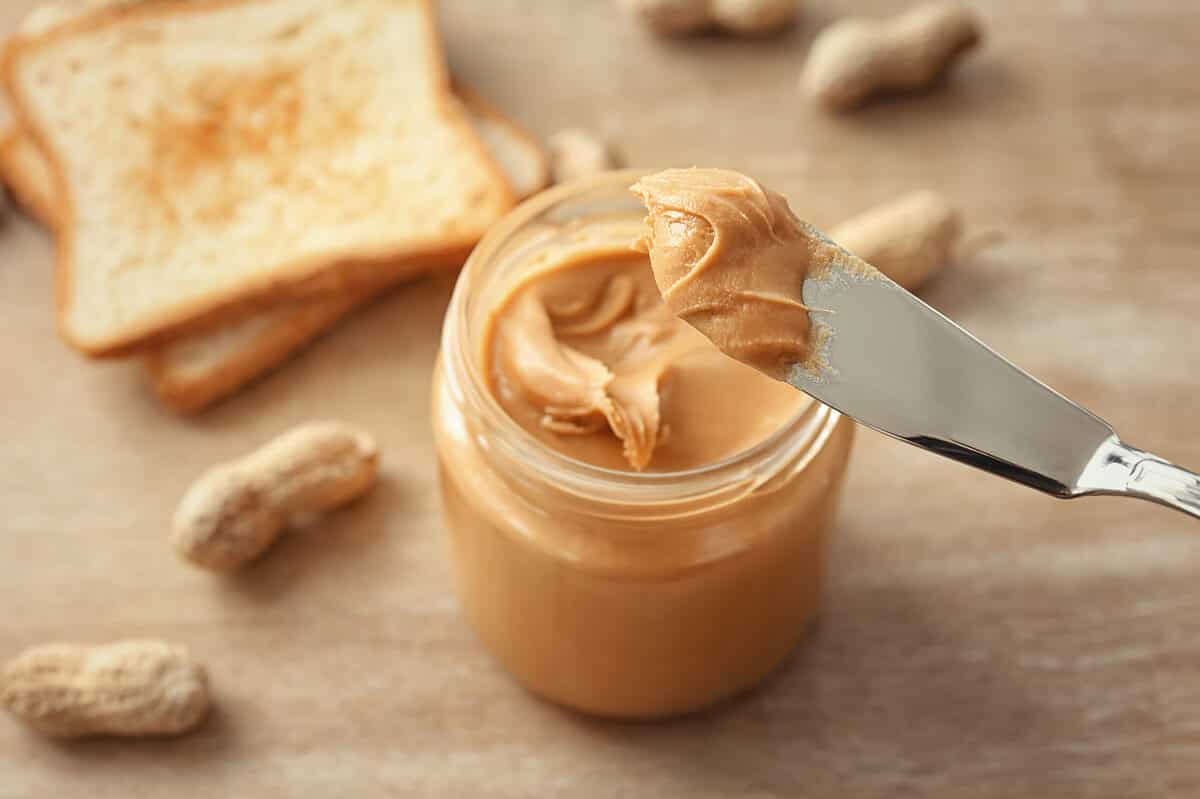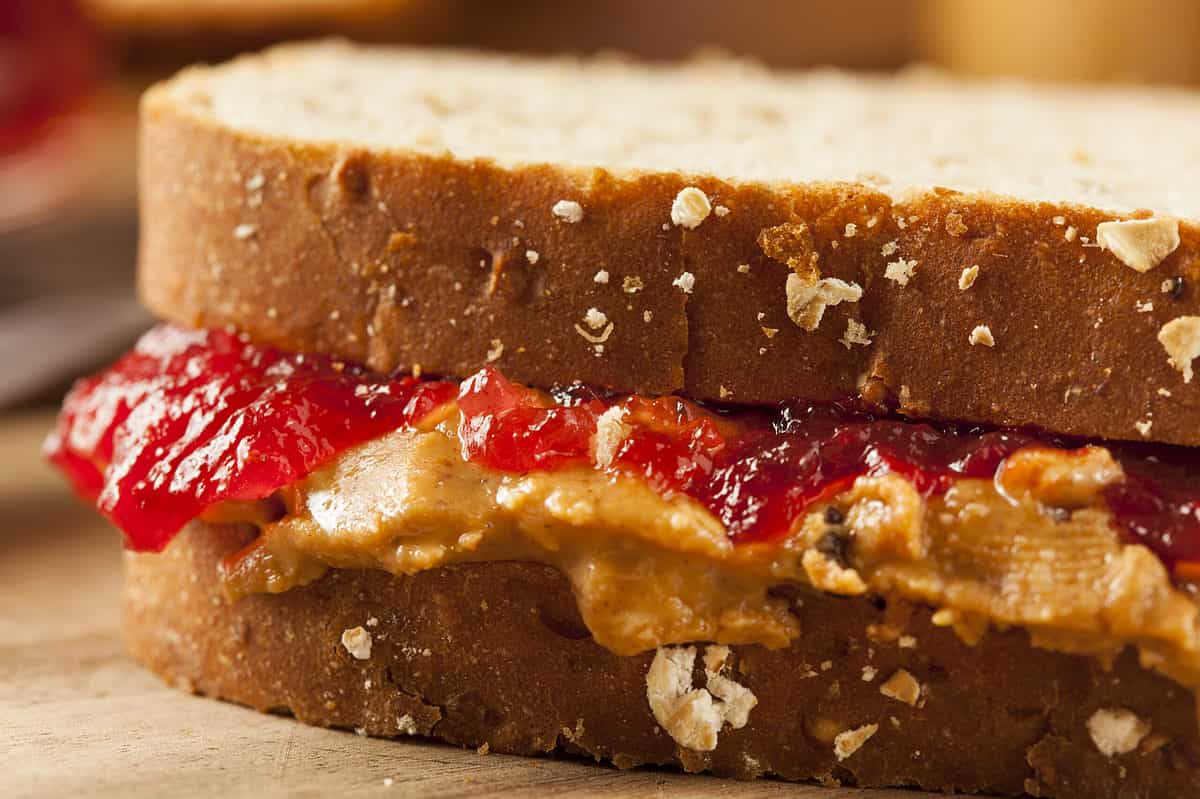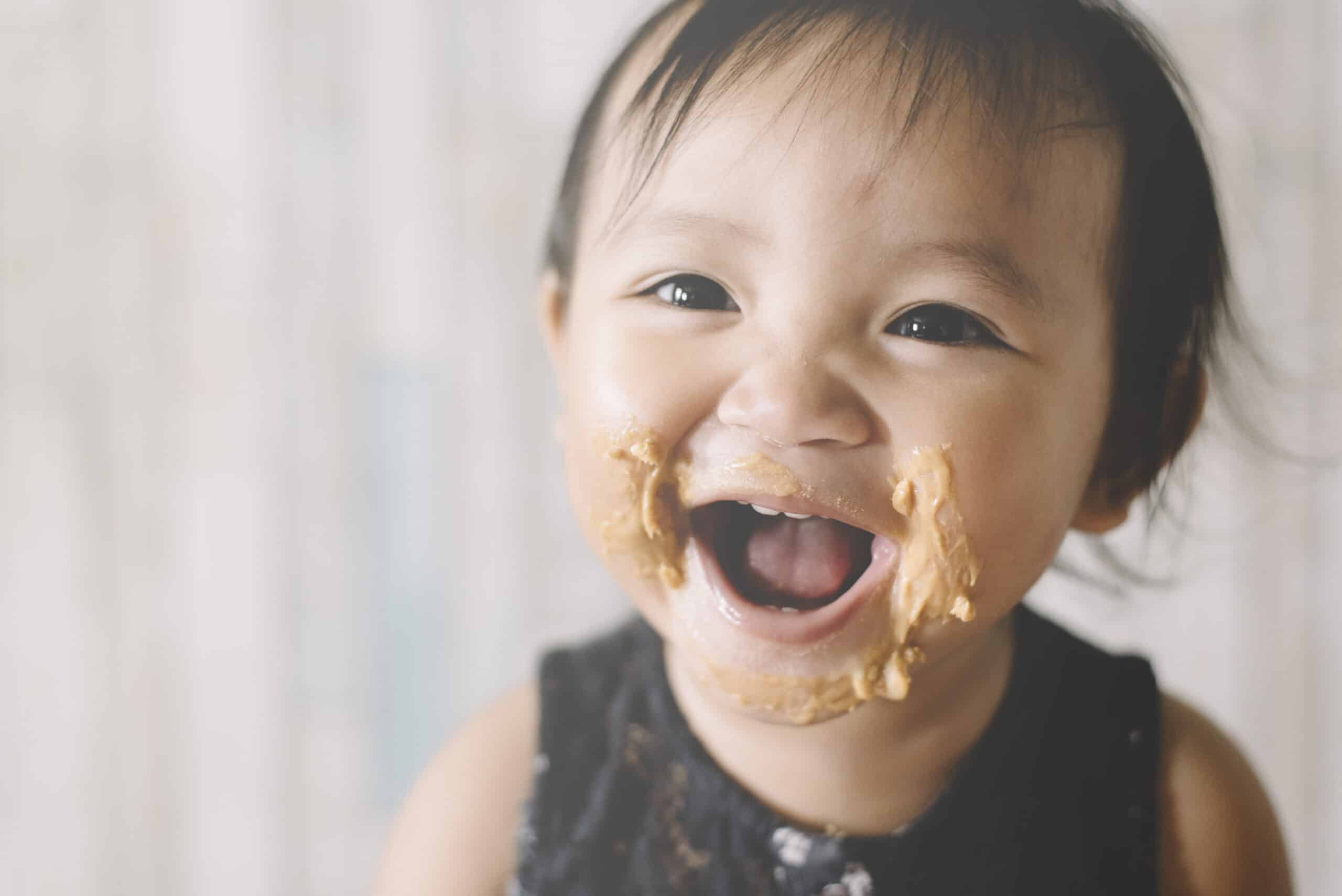Most kids love peanut butter! It’s a staple childhood food, and the basis of many quick, easy-to-make, healthy snacks and meals. But exactly how early should you introduce peanut butter to your baby?
In most cases, it’s OK to introduce peanut butter to babies as soon as they’re old enough to eat other soft solid foods. Still, according to the American Academy of Pediatrics, you should take care to correctly time the introduction to this wonderful food. Make sure you give your baby the right kind of peanut butter.
Read on to learn the whens and hows for feeding babies the PB that will go into their PB&J sandwiches when they’re just a little older.
Key Points of Introducing Peanut Butter to Your Baby
- Introducing peanut butter to your baby could help them avoid allergies later in life.
- If your baby is displaying other allergies you could still introduce peanut butter but you should consult a doctor for guidance first.
- The thickness of peanut butter will be dependent on the age of your baby and what consistency of foods they are eating.
Why Pediatricians Recommend Introducing Your Baby to Peanut Butter

©Rawpixel.com/Shutterstock.com
Pediatricians agree that introducing peanut butter to your baby can help prevent them from becoming allergic to peanuts later in life. This is a good thing because peanut allergies are nothing to sneeze at! Allergic reactions to peanut butter and other peanut products can be extreme and even life-threatening.
Could Your Baby Have an Allergic Reaction to Peanut Butter?
But what if a baby already has a peanut allergy? If that thought makes you hesitant to give your baby peanut butter to begin with, you’re not alone. Many parents worry about the reaction their baby could have to peanut products.
The good news is that peanut allergies usually develop later in life. As long as your baby doesn’t have eczema or an egg allergy, it’s very unlikely that they’ll have any bad reaction to peanut butter at all.
When to Introduce Peanut Butter to Healthy, Allergy-free Babies
If your baby is indeed eczema-free and not allergic to eggs, you can include peanut butter in their diet alongside other soft solid foods.
So when can you introduce them to soft solids? Typically, babies are ready for baby food, peanut butter, and other similarly soft treats between the ages of 4 and 6 months. If you’re not quite sure if your baby is ready for solids, consult with your pediatrician.
Should You Introduce Peanut Butter to a Baby Who’s at Risk for a Peanut Allergy?
If your baby has eczema or an egg allergy, there’s a chance they may also be allergic to peanuts. But if that’s the case, don’t pass on peanut butter just yet! Even babies with severe eczema or strong egg allergies are often able to eat peanut butter and can benefit from the allergy prevention it provides.
You’ll want to proceed with caution, though. If your baby has an exceptionally bad case of eczema or an egg allergy, you’ll want to get a peanut allergy screening and consult with a doctor. In those cases, a baby can sometimes still be introduced to peanut butter, carefully and with a doctor's guidance.
If your baby isn’t allergic to eggs and has only mild eczema, a serious peanut allergy isn’t that likely. In that case, doctors recommend introducing the baby to peanut butter at 6 months. Doctors also encourage introduction to peanut butter at this point, because peanut butter can help prevent peanut allergies for these slightly at-risk babies. Cautious parents may still want to consult with a doctor or get an allergy test, but that’s not usually considered necessary.
Should You Introduce Peanut Butter to Your Baby if They’re Sick?
The very first time you give your baby peanut butter, they should be in good health. In general, don’t introduce any unfamiliar food to a baby who’s sick. The new experience could be hard on their weakened body. New foods can also be confusing and upsetting to a sick, tired baby.
What Kind of Peanut Butter Should You Give Your Baby?

©New Africa/Shutterstock.com
Peanut butter for babies should have two characteristics: it should be smooth and thin. This means you should definitely avoid chunky peanut butter. Babies can choke on those little peanut bits.
You should also avoid peanut butter which contains a lot of sugar or a lot of added oil, beyond the oil that naturally occurs in peanuts. This means that most popular brands of peanut butter are off-limits for babies. It’s quite common for a jar of peanut butter to contain a significant amount of palm oil or sugar. These extra ingredients help make peanut butter firm and thick. That’s great for sandwiches and peanut butter balls. But it’s not great for a baby who’s still eating baby food.
So, you’ll want to look for organic, creamy peanut butter, with very few additives. If the peanut butter you’ve found drips off the edges of your knife rather than sticking firmly to it, you’ve picked a winner. For a real test, put the peanut butter on top of your butter knife, and then flip the knife so the peanut butter is facing down. If the peanut butter is baby-safe, much of the peanut butter will fall off the downturned blade. This is especially true if the peanut butter is at room temperature.
There are ways to make peanut butter at home to make them sugar and oil-free. However, as mentioned above it has to be perfectly smooth butter. A food processor and small amounts of oil could be a good option to make it perfectly pure and baby safe!
How to Make Peanut Butter Softer
Remember what I said about testing peanut butter at room temperature? Well, room temperature is also a good temperature if you’re going to feed it to your 4-6-month-old baby for the first time.
Watering down peanut butter is helpful too. You don’t even need to use a blender or egg beater. You can just gently mix the peanut butter and water with a fork until the mix is evenly blended and very baby friendly.
Ways to Mix Peanut Butter With Other Foods
Still, when you think about it, who really eats peanut butter straight, with nothing else? Sure, in a weak, exhausted, hungry moment, you as a parent might do this. But you likely wouldn’t actively encourage your children to do the same. And your baby will have a much more enjoyable introduction to peanut butter if they eat it with other baby-friendly foods.
Pureé peanut butter with other foods that go well with that peanut taste, such as bananas, oatmeal, or yogurt. Soft peanut butter and applesauce, whisked together, is a winning combination as well. It can be thought of as a nice sweet but nutritious treat.
Feeding Your Baby Peanut Butter After 6 Months

©Brent Hofacker/Shutterstock.com
Babies start to eat soft solids between 4 and 6 months. But at the 6-month mark, they’re ready for a much wider variety of foods. This opens up your child to a world of extra peanut butter possibilities.
At this point, you can start giving your baby peanut butter on bread or soft toast. You can even start giving them that American childhood classic, the peanut butter and jelly sandwich. Peanut butter and banana sandwiches are another possibility – a fun twist on that classic. Avoid peanut butter and honey until you’re well past the 6-month mark, though. Experts agree that babies shouldn't eat honey until they’re at least 1 year old.
Treats containing peanut butter are a possibility at 6 months too. Try giving your older baby soft-baked peanut butter cookies, or peanut butter puffs as a nice lower-sugar alternative.
When Can Babies Have Thicker Peanut Butter?
Your baby’s 6-month half birthday opens them to more foods and more types of peanut butter. At this point, you can move away from thin, smooth, organic peanut butter. Popular brands of peanut butter, such as Jif, Skippy, or Smucker's are permissible after 6 months, with palm oil, sugar, and all. However, the organic or homemade options will generally be better for health reasons and for the planet.
Recommended Reading on Babies and Peanut Butter
Massachusetts General Hospital has published a really helpful article with additional tips for your baby's first time eating peanut butter. The article even includes some simple recipes for peanut butter baby food! In addition, Medical News Today offers a useful guide on how to recognize peanut allergy symptoms in babies.
The image featured at the top of this post is ©Hafiez Razali/Shutterstock.com.
